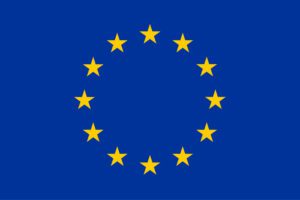Freedom of the press is enshrined in Article 15 of the Jordanian Constitution. The sector is
mainly regulated by the law on press and publications and by the law on audiovisual media which
includes electronic publications. Over the past 10 years, several specific laws
have also encroached on the freedom of the press: the law against terrorism, the law on the
cybercrime (2018)… Today, there are more than 20 laws and regulations that govern the practice
freedom of the press.
The Press and Publications Act of 1993 and 1998, which has been amended on numerous occasions
the emergence of numerous private media, granted protection of sources and founded the
the basis for access to public information. But it also provided for the establishment of a
license for any media, printing, bookstore or advertising or translation agency, institute of
survey or even research centers. In other words, the authorization is limited.
The Jordanian government adopted a National Media Strategy in 2011 in response to
to the Arab Spring, a strategy designed to establish “independent Jordanian media rooted in
the principles of freedom, pluralism and professionalism. However, soon after, in 2011 and
2012, two amendments to the press law forced nearly 290 news sites to close
to meet the new regulatory requirements to obtain a license from the
Media Commission.
Liberalized twenty years ago in 2002 with the end of the Jordanian Radio Television monopoly
(JRTV), the audiovisual sector is controlled. The law on audiovisual media has brought together the
regulators (one for the print media, the other for broadcasting) into one, the Commission
Jordan Media Center (JMC). The financing of this Commission is entirely covered by
the State (€1.5 million in 2019) and its members are appointed by the Council of Ministers to whom it
to validate – or not – the Commission’s decisions to grant broadcasting licenses to
radios and televisions. Less exposed, the Commission de Régulation des Télécoms determines since
1995 available frequencies and conditions for broadcasting telecom services. 39 stations of
radios have a license, 20 of which are governmental (and 6 for universities).
The Ministry of Information has been replaced by government spokespersons who
sector and the state media, along with the ministries of culture, education, health and social affairs.
information technology, finance.
With respect to access to information, the lack of an independent Commission on Access to
information renders null and void any attempt to obtain information on a regular basis or to make
recourse in case of obstacles. Moreover, the practice of transparency is selective: for example, the
The police reserve the exclusive right to provide service information on the state of the police force to their own radio station.
circulation.
Jordanians are abandoning their traditional media (television and newspapers) and are getting information
mainly on social networks: they were 88% connected in 2018 compared to 23% in 2012.
According to IPSOS (IPSOS 2018 result cited in USAID’s JORDAN MEDIA ASSESSMENT published in June
2021), over the same period (between 2012 and 2018), television consumption declined
from 93% to 80%, radio from 30% to 26% and daily newspapers from 18% to 6% (with drops
of the official newspapers – Al Rai, Al Ghad and Ad Dustour).
The English-language press, which has an extremely marginal audience among the population
Jordanian press, is generally freer than the Arabic-speaking press, although monotonous and
uniform; it is intended for a mainly foreign audience, diplomats or members of NGOs.
Among the commercial media, the private television Ro’ya and its website (http://roya.tv)
dominate the advertising market. Ro’ya and some private radios like Masaj, Dahab and Fun or
Rotana FM, share the audience with Al Ghad and the English-language site Jordan News launched in
January 2021.
Some professional media with a news mission remain under the status of companies
private without being commercial: the 7iber website, the Al Balad radio and its AmmanNet website which
attempts to bring together local and community radio stations with a program exchange
or the webTv Aramram which broadcasts only on social networks.
The official Jordanian media actors are organized in the Jordan Press
Association (JPA), Jordan’s sole affiliate of the International Federation of Journalists.
There is no organization for independent or non-official media in
Jordan. The community radios have grouped together in a federation that brings together the Al
Balad, Voice of Karak, New Maan radio, Yarmouk FM and Farah Al-Nas, among others, are beneficiaries of the
European program to support Jordanian media in 2015. The Media Network
community joined the coalition of 15 Jordanian civil society organizations HIMAM.
The Jordanian market cannot absorb the large number of graduates from the seven main
journalism training institutions. Initiated in 1982 at the public university of Yarmouk in Irbid,
these trainings remain mainly theoretical and are provided by professors who do not have
who have never been journalists and who have no direct connection with the media. The practice of journalism, the
This is not part of the training.
Only two of seven universities offer electronic media courses. Six universities
have radio and television production studios, and many publish newspapers
students. The offer is completed by master’s degree courses offered by the Jordan Media Institute
(JMI) and by the training centers of the national television, by the official press agency and by
the private Television Ro’ya.
An independent commission on education for secularization is working on a
educational curriculum to introduce media education, as a result of the analysis made by UNESCO
in 2015. A national strategy has been adopted until 2023, with training for
primary, secondary and university teachers under the auspices of the Jordan Media Institute
(JMI).
Useful links :
https://noria-research.com/eu-support-for-the-jordanian-media/
https://cmds.ceu.edu/sites/cmcs.ceu.hu/files/attachment/basicpage/1487/mimjordanregulationfinal.pdf
https://en.unesco.org/sites/default/files/updatedjordan.avl-analysis.16-05-18ls.pdf
https://cyrilla.org/api/files/1589195202261rwghpm3anh.pdf
http://www.unesco.org/new/fileadmin/MULTIMEDIA/FIELD/Amman/pdf/Gender_in_Media_EN_25062018.pdf
http://training-needs-assessment.pdf (unesco.org)


